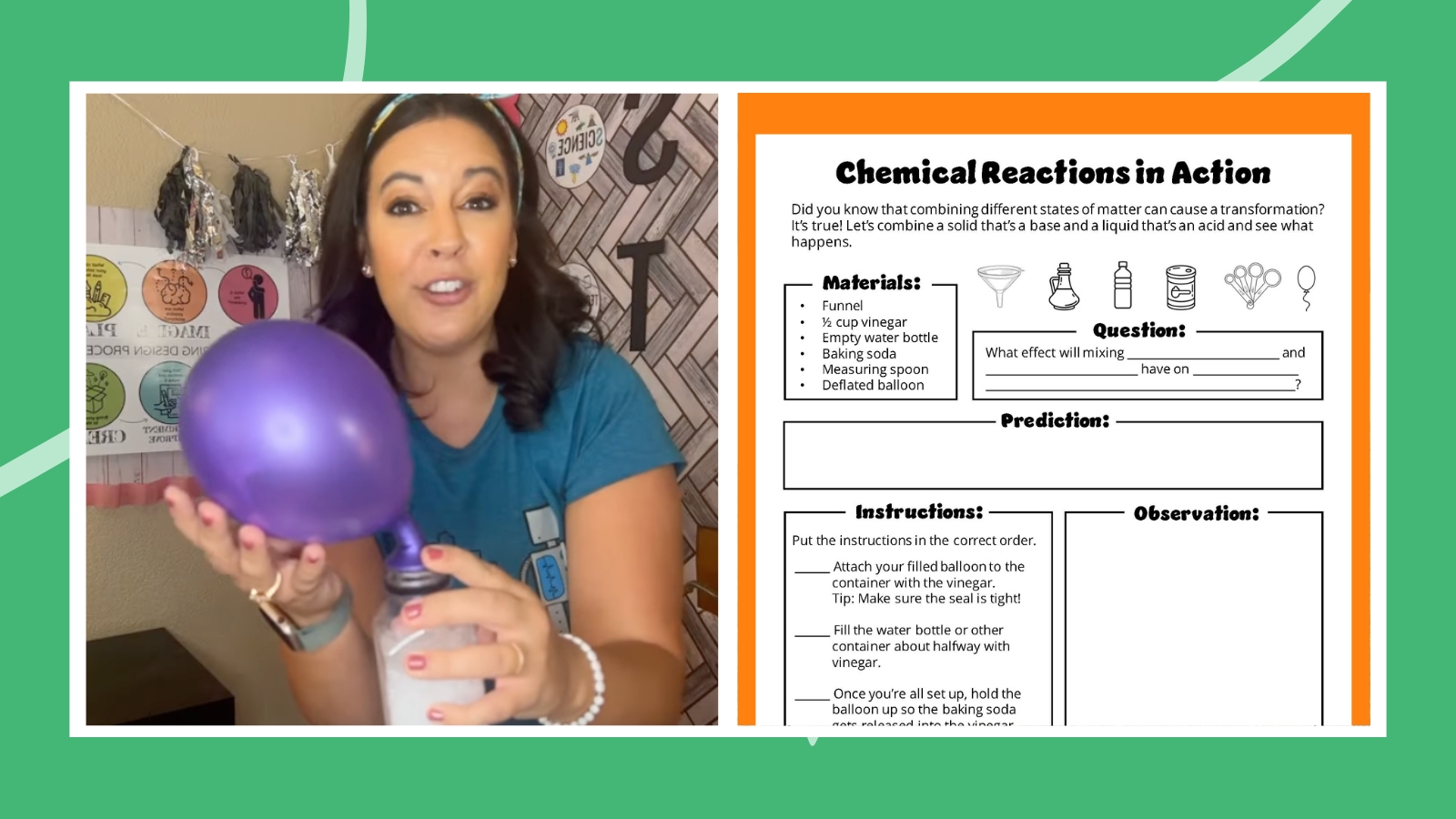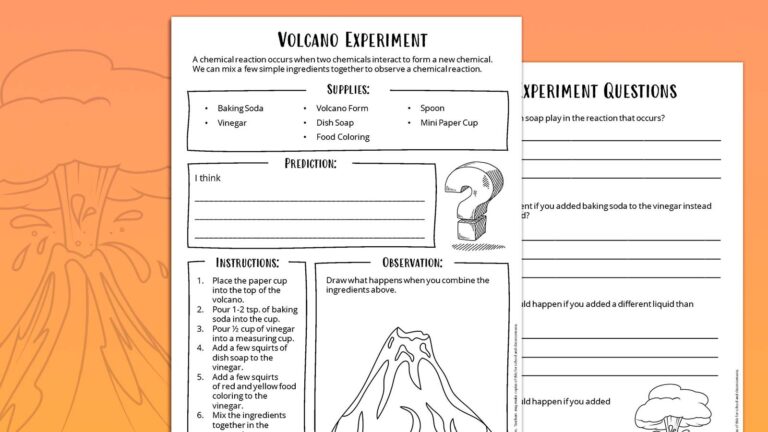Kids and balloons go hand-in-hand so why not try a fun science experiment that incorporates a balloon or two? This experiment requires little more than what you already have in your kitchen cabinet. Grab a dash of baking soda, a splash of vinegar, and learn all about acids, bases, states of matter, and chemical reactions! Everyone will be amazed watching a balloon inflate without a single breath being blown.
Fill out the form on this page to grab your free printable recording sheet, and try the baking soda and vinegar balloon experiment with your little scientists!
How does the baking soda and vinegar balloon experiment work?
The baking soda and vinegar balloon experiment demonstrates a chemical reaction between an acid and a base. The baking soda acts as the base and the vinegar as the acid. When the two combine, carbon dioxide (CO2) escapes the container and causes the balloon to blow up.
What does this experiment teach?
This experiment teaches how different states of matter transform when combined. In this case, a solid (baking soda) and a liquid (vinegar) mix to produce a gas (CO2). Since carbon dioxide is the same gas that is released when humans breathe out, students will make the connection between human breath blowing up a balloon and the reaction of this experiment doing the same.
Is there a baking soda and vinegar balloon video?
This video shows how to do the baking soda and vinegar balloon experiment, using just a few ingredients.
Materials Needed
To do the baking soda and vinegar balloon experiment, you will need:
- A funnel
- Approximately 1/2 cup of vinegar
- Empty water bottle or similar container
- Baking soda
- Measuring spoon
- Deflated balloon
Our free recording sheet is also helpful—fill out the form on this page to get it.
Baking soda and balloon experiment steps:
1. Blow up a balloon just enough to stretch it out a bit. Then, use the funnel and measuring spoon to add about a teaspoon of baking soda inside the balloon.
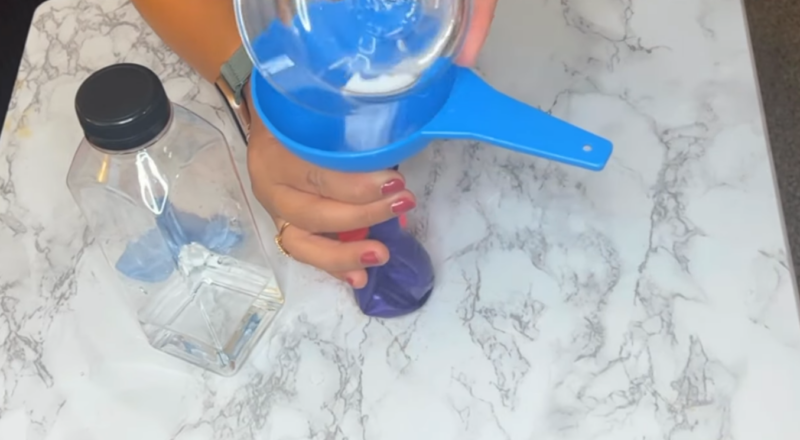
2. Fill the water bottle or other container about halfway with vinegar.
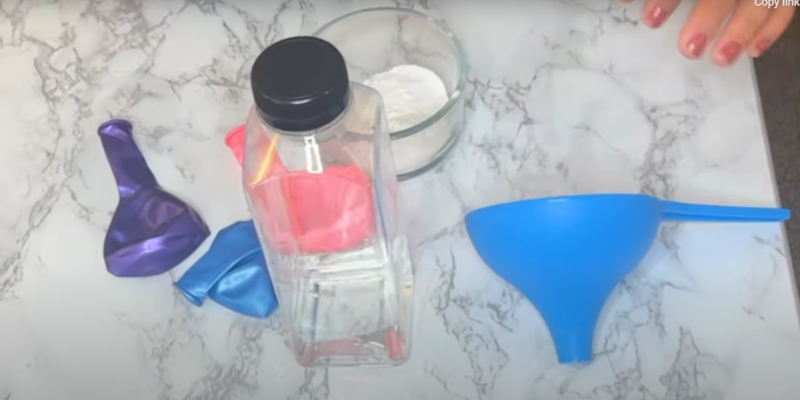
3. Attach your filled balloon to the container with the vinegar. Make sure the seal is tight!
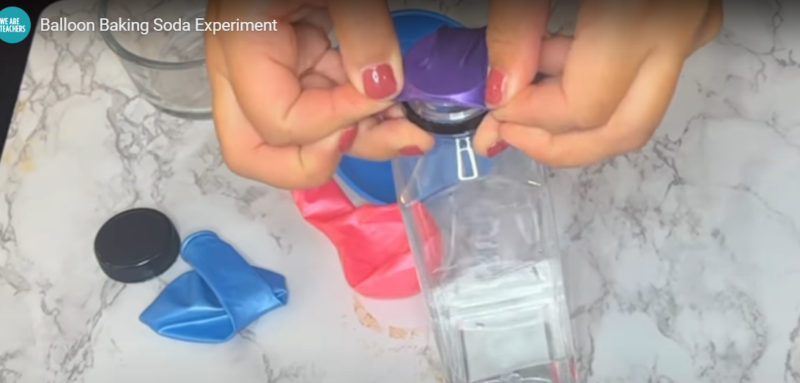
4. Once you’re all set up, hold the balloon up so the baking soda gets released into the vinegar.
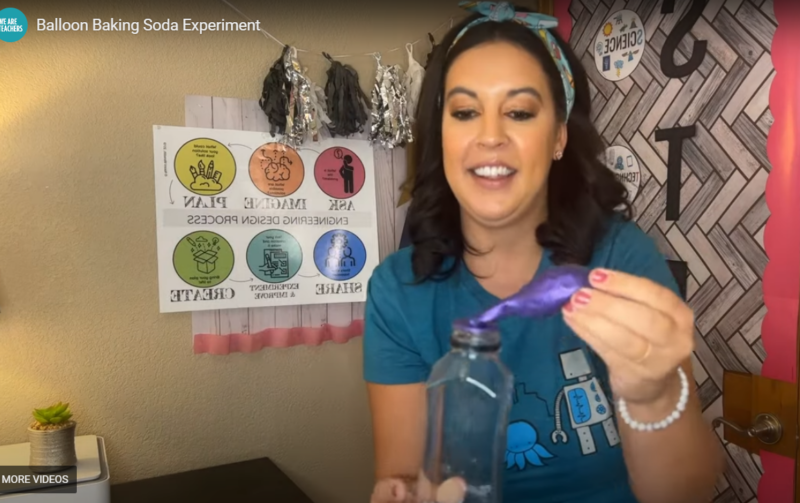
5. Finally, watch the balloon blow up!
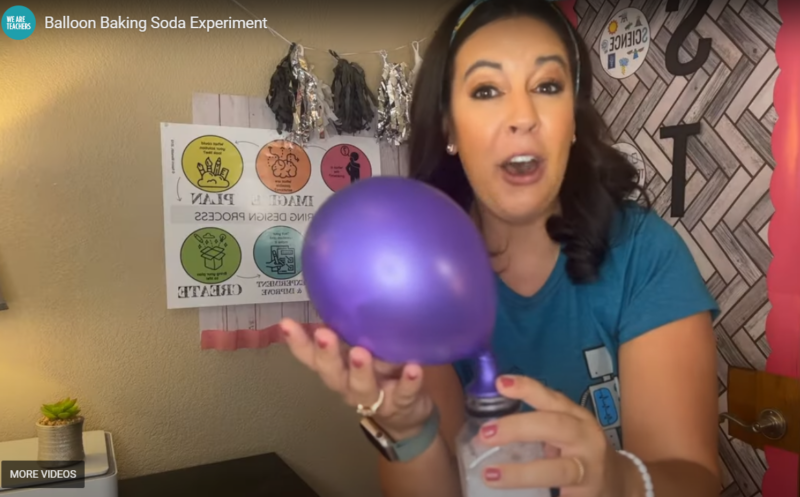
Grab our baking soda and vinegar balloon experiment worksheet!
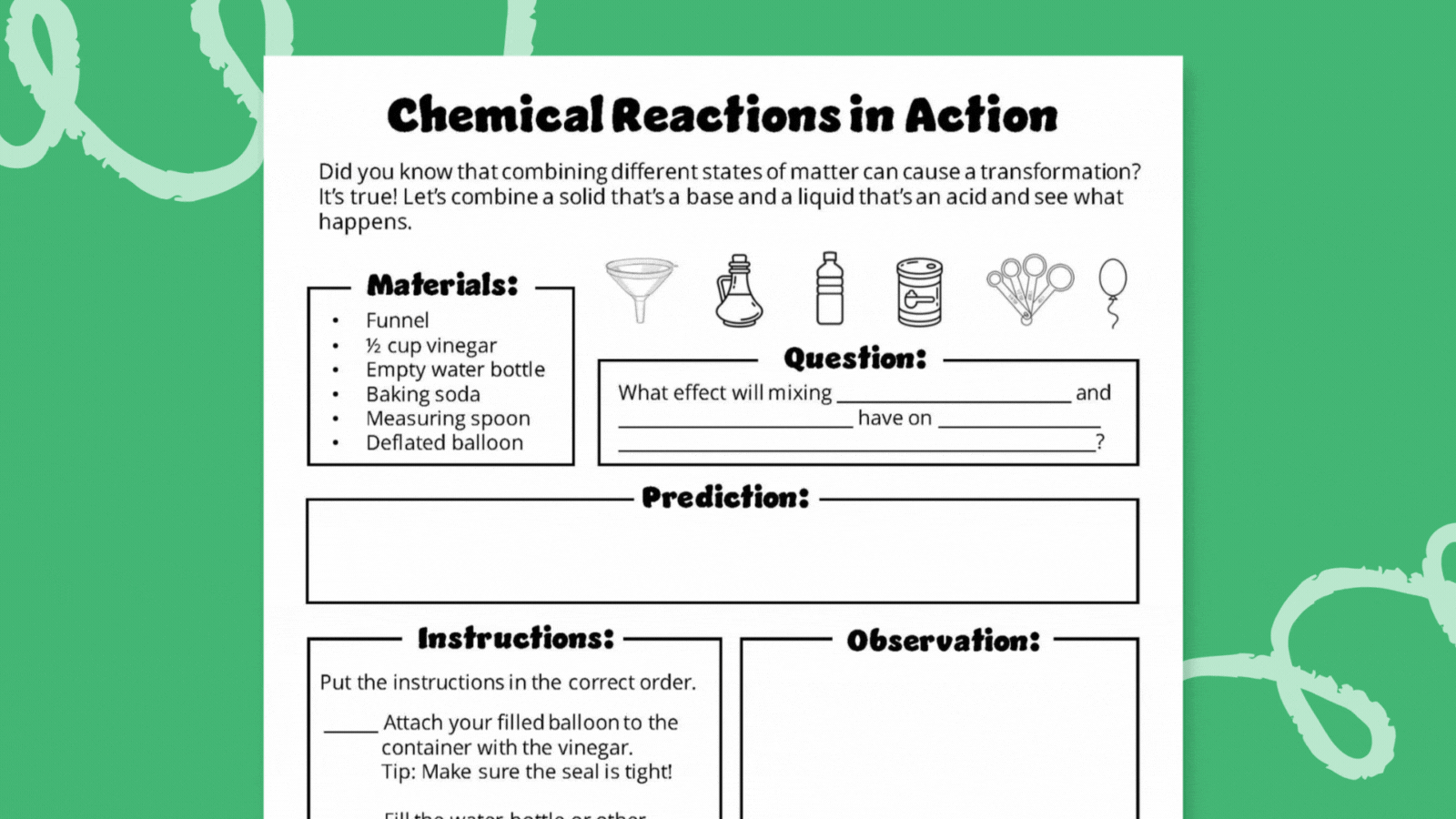
Click the button below to get your worksheet. The worksheet asks kids to guess the correct order of the steps in the experiment. Next, kids must make a prediction about what they think will happen. They can use the provided spaces to draw what happens before and after they add the baking soda to the vinegar. Did their predictions come true?
Additional Reflection Questions
- What happened when the baking soda was added to the vinegar?
- Why do you think the balloon inflated?
- Why do you think the balloon eventually stops blowing up?
- What do you think would happen if we used more or less baking soda?
Can this experiment be done for a science fair?
Yes! If you want to do the baking soda and vinegar balloon experiment for a science fair, we recommend switching up some of the variables. For example: Does the amount of vinegar matter? What if you run two experiments side by side with different amounts of baking soda? Which balloon filled up faster? Form a hypothesis about how changing the variables will impact the experiment. Good luck!
